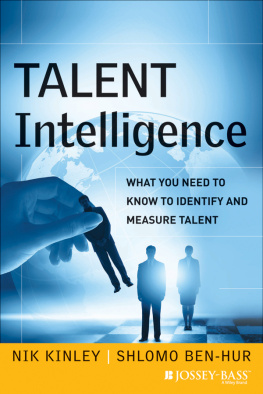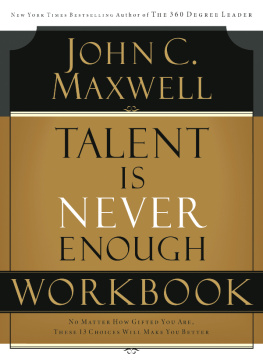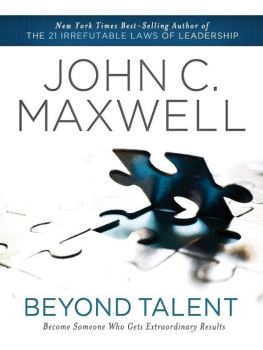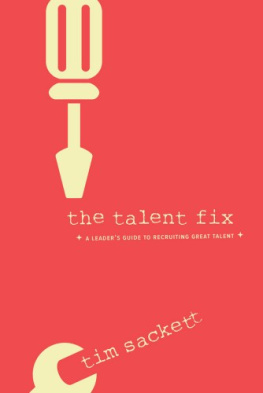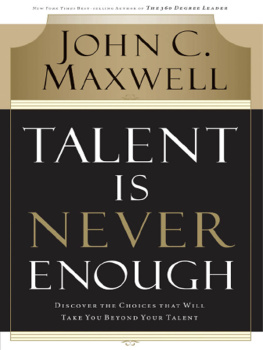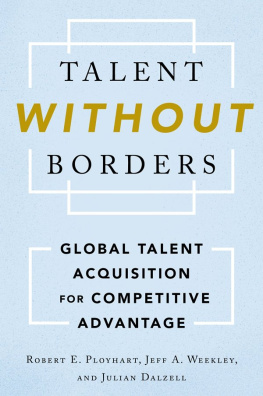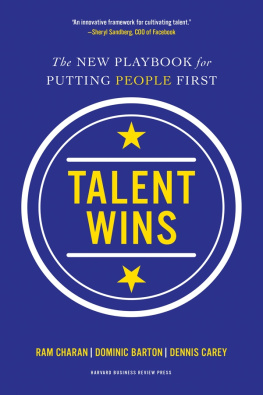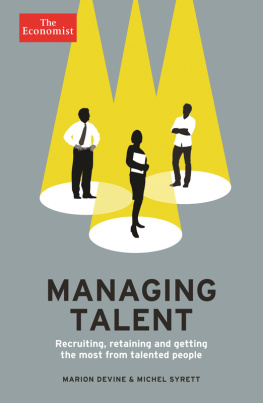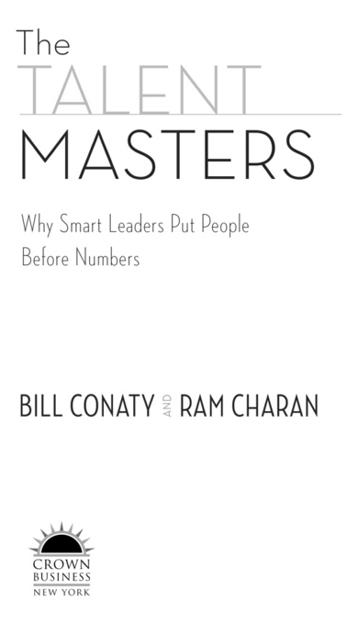Also by RAM CHARAN
Leadership in the Era of
Economic Uncertainty:
The New Rules for Getting
the Right Things Done in
Difficult Times
Owning Up:
The 14 Questions Every
Board Member Needs to Ask
The Game Changer:
How You Can Drive Revenue
and Profit Growth with
Innovation
WITH A. G. LAFLEY
Leaders at All Levels:
Deepening Your Talent Pool
to Solve the Succession
Crisis
What the Customer Wants
You to Know:
How Everybody Needs to
Think Differently About Sales
Know-How:
The 8 Skills That Separate
People Who Perform from
Those Who Dont
Boards That Deliver:
Advancing Corporate
Governance from
Compliance to Competitive
Advantage
Confronting Reality:
Doing What Matters to Get
Things Right
WITH LARRY BOSSIDY
Profitable Growth Is
Everyones Business:
10 Tools You
Can Use Monday Morning
Execution:
The Discipline of Getting
Things Done
WITH LARRY BOSSIDY
What the CEO Wants You
to Know
The Leadership Pipeline
WITH STEPHEN DROTTER AND
JAMES NOEL
Action, Urgency,
Excellence
E-Board Strategies:
How to Survive and Win
WITH ROGER KENNY
Business Acumen
Solid Line, Dotted Line,
Bottom Line
Every Business Is a
Growth Business
WITH NOEL M. TICHY
Boards at Work
Strategic Management:
A Casebook in Policy
and Planning
WITH CHARLES W. HOFER,
EDWIN A. MURRAY, AND
ROBERT A. PITTS
Copyright 2010 by Ram Charan and Bill Conaty
All rights reserved.
Published in the United States by Crown Business, an imprint of the Crown Publishing Group, a division of Random House, Inc., New York.
www.crownpublishing.com
CROWN BUSINESS is a trademark and CROWN and the Rising Sun colophon are registered trademarks of Random House, Inc.
Library of Congress Cataloging-in-Publication Data is available upon request.
eISBN: 978-0-307-46027-1
v3.1
To the many great business and human resource leaders who have inspired me over the years and to my family for supporting my efforts to make a difference in the HR world
BILL CONATY
To the hearts and souls of the joint family of twelve siblings and cousins living under one roof for fifty years whose personal sacrifices made my formal education possible
RAM CHARAN
Contents
Part I
WHAT A MASTER DOES: INSIDE GES TALENT MANAGEMENT SYSTEM
Part II
The SPECIAL EXPERTISE of TALENT MASTERS
Part III
BECOMING A TALENT MASTER
Part IV
The TALENT MASTERY TOOL KIT
Chapter 1
TALENT Is the EDGE
No Talent, No Numbers
I f businesses managed their money as carelessly as they manage their people, most would be bankrupt.
The great majority of companies that control their finances masterfully dont have any comparable processes for developing their leaders or even pinpointing which ones to develop. No matter how much effort they put into recruiting, training, and assessing leaderas, their talent management remains hit-or-miss: governed by superficial criteria and outdated concepts, dependent as much on luck as on skill. These are the companies that wake up some morning suddenly realizing they need a new CEO but dont know where to start looking. More pervasively, by repeatedly putting people into the wrong jobs, they waste both human and financial capital when those people dont perform.
How did this come to be? After all, its clear enough that people make the decisions and take the actions that produce the numbers. Talent is the leading indicator of whether a business is headed up or down. Everyone agrees that its a companys most important resource. But a spreadsheet full of numbers is a lot easier to parse than the characteristics unique to a human being. You can control what youre doing; the numbers are unambiguous, the outputs are clear. People, not so much. Better to leave that to the HR staff or search firms, particularly since the pressure to make your numbers quarter after quarter is so great that theres no time to waste on the soft stuff. And of course the law requires financial reports.
Youve no doubt noticed, however, that making money has gotten harder. It will remain so for the imaginable future. In the fast-changing global marketplace, the half-life of core competencies grows ever shorter. All of the familiar competitive advantages such as market share, brand, scale of a business, cost structure, technological know-how, and patents are constantly at risk.
Talent will be the big differentiator between companies that succeed and those that dont. Those that win will be led by people who can adapt their organizations to change, make the right strategic bets, take calculated risks, conceive and execute new value-creating opportunities, and build and rebuild competitive advantage.
Only one competency lasts. It is the ability to create a steady, self-renewing stream of leaders. Money is just a commodity. Talent supplies the edge. We cant put it any better than Ron Nersesian, the head of Agilent Technologies Electronic Measurement Group: Developing peoples talent is the whole of the company at the end of the day. Our products all are time-perishable. The only thing that stays is the institutional learning and the development of the skills and the capabilities that we have in our people.
Managing people with precision is without question harder than managing numbers, but it is doable and gets easier once you know how. Companies such as GE, P&G, Hindustan Unilever, and some others analyze talent, understand it, shape it, and build it through a combination of disciplined routines and processes, and something even rarer and harder to observe from outside: a collective expertise, honed through years of continuous improvement in recognizing and developing talent.
These companies have disproved the myth that the judgment of human potential is a soft art. Their rigorous, iterative, and repetitive processes convert subjective judgment about a persons talent into an objective set of observations that are specific, verifiable, and ultimately just as concrete as the analysis of a financial statement.
They have embedded in their culture the habits of observing talent, making judgments about it, and figuring out how to unleash it. They draw from their large toolboxes and creative imaginations to accelerate each leaders growth. Their executives are expected to make developing, deploying, and refreshing leadership talent an everyday, top-of-the-mind part of their jobs, and they are held accountable for how well they do it.
These companies are building for the long term. We call them talent masters, and this book will show you how they do it.
SEARCHING FOR THE SPECIFICS
One reason hardheaded managers disdain the soft stuff is that it so often reflects soft thinking. Take some of the criteria human resources staffs commonly use to evaluate leadership competencies. Theyll rank people on a scale according to labels like these: strategic, innovative, master communicator, very bright, analytic, intuitive, and so on. These cryptic descriptions are so broad that they are worthless in the real world of managing. They cannot even predict whether a person is a good or poor fit for a given job, much less capture the unique abilities of an outstanding leader.



